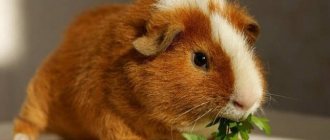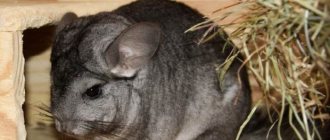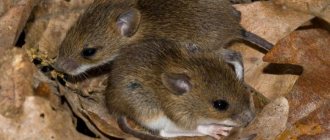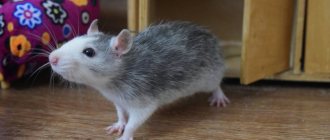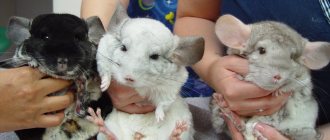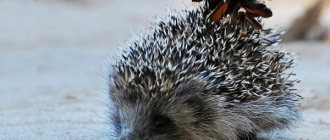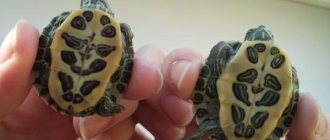Chinchillas are the longest-livers among all rodents, but it is difficult to answer how long chinchillas live at home. Everything directly depends on the quality of care for the animal and how strong its body is.
If you get a healthy individual, then it can live with you for many years and at the same time will be active throughout almost its entire life. Since the animal lives for a long time, it is necessary to prepare for this in advance. You will have to feed her, walk her, bathe her and treat her for several years. To answer the question of how long a chinchilla lives, read below.
Lifespan of chinchillas at home
On average, chinchillas live 10-15 years. With careful care, they live up to 20-28 years, but for this you need to maintain the ideal temperature regime and proper nutrition. Genes also play a big role, against which nothing can help; if there are genetic diseases in the family, they will sooner or later destroy the chinchilla.
If you want your chinchilla to live 15 years or more, read the rules for keeping and caring for this fragile animal. Then you will be able to provide him with comfortable conditions and detect diseases in the early stages.
Factors that influence life expectancy:
- Climate in the room. Temperature, humidity and lack of drafts
- A properly equipped cage with plenty of space
- A balanced diet that changes depending on the season and the chinchilla’s health status
- Hygiene, the animal must bathe in the sand and clean its fur
- Cleanliness of the cage and timely cleaning in it
- Absence of excessive noise in the room and other irritants that cause stress
Sweet home
It is better to choose a spacious cage for your pet. It would be good if it had a small house, a closed compartment. Chinchillas love privacy. Individuals are found to be very active, they rush around the cage day and night, sleeping only a few hours a day. But it happens the other way around, the animal is lethargic and constantly dozes. Just like humans, they have character and temperament, so watching them is a pleasure.
With proper animal care, you will not have to worry about how long your pet chinchilla lives. The bottom of the cage should be dry and strewn with sawdust or special filler. Paws should not step on moisture. This animal even bathes in the sand. Water is unacceptable to them. The fluffies drink from special sippy cups that hang on the wall.
How long do chinchillas live in the wild?
This issue has not yet been studied, since chinchillas began to be studied about 50 years ago. Now there is approximate data that says that chinchillas in the wild live up to 30 years, but most die before 15 due to predators, injuries, bad weather and lack of food.
The longevity of chinchillas is explained by their nocturnal lifestyle and extreme caution. When they come out of hiding and see danger, they always warn their fellow tribesmen and brothers about it. They live in fairly large flocks, which greatly helps them in finding food.
The climate in which they live is arid and cold, so there are few parasites and harmful bacteria that can easily kill the animal. There is quite a lot of food for them in nature, as they feed on dry plants, fallen berries and tree branches. It seems that this is not enough for them to provide themselves with all the vitamins, but in fact in nature they have enough of everything.
Where do they live?
The historical homeland of the chinchilla is South America. Colonies of animals lived almost along the entire western coast. During the period of active trapping of fur-bearing animals, hunters burned vegetation to get to their burrows and shelters. A significant decrease in the number of animals, as well as the destruction of some plant species, reduced the habitat of the genus.
Currently, chinchillas are found only in central Chile, where the Chinchilla National Reserve was created in 1983 to preserve them.
Where do chinchillas live?
The usual habitat is mountainous terrain with little vegetation. Animals make shelters for themselves between stones, in crevices, caves; if necessary, they can dig a hole or make a home in the abandoned holes of other animals.
How to extend the life of chinchillas
The first thing to do is to provide good nutrition and not overfeed with treats. Next, make sure that the room has the correct microclimate and the temperature and humidity are optimal for chinchillas. Also, we must not forget about the mental health of chinchillas, because if it is weakened, then such an animal will not live long and will not bring you joy, since it will constantly run away, scream and you will not receive any affection from it.
There are many reasons for premature death, but most often it is the human factor, as pets are not kept correctly:
- Genetic diseases
- Incorrect feeding. Lack of food or overfeeding treats
- Due to gastrointestinal diseases that were not treated in time
- Hypothermia or overheating
- Constant stress
- Injuries
Now we have not yet fully learned how to properly maintain chinchillas so that they can live longer at home, because there is very little information on them. The domestication of chinchillas began only 50 years ago, and in Russia they became popular only 10-12 years ago. Most of the information that is out there is not supported by encyclopedias or the works of famous veterinarians. The area is not of great interest to scientists, so the owners make do with the accumulated experience of other people and communicate with each other on forums.
Feeding
The quality of food will determine how many years a chinchilla will live in your home. The animal needs to be fed with special granulated food, with the addition of vitamins and treats that it will like.
The animal will happily eat dried fruits, rose hips, dried chamomile flowers, hibiscus, dandelion and cornflowers, and dried carrots.
Every day, a chinchilla should consume hay with various additives - nettle or rose hip flowers - these foods can be purchased at a pet store.
Share
Healthy eating
If you provide your chinchilla with all the vitamins, minerals, fiber, etc., then it will not have health problems, which means the body will be strong.
A chinchilla's diet should include high-quality dry food, plenty of hay and clean drinking water. In the off-season seasons, it is necessary to add useful herbs to the main feed, which will strengthen the immune system and prevent the most common diseases.
Don't forget to feed your chinchilla treats to keep her happy and get healthy oils, acids and vitamins from them. But, under no circumstances give them a lot, otherwise the animal may suddenly gain weight and damage its liver.
Under no circumstances should you give food from the table to people or juicy foods; you should absolutely not give fried, salty, fatty or sweet foods. Only dry food and hay, which are selected specifically for chinchillas.
Natural enemies
In their natural habitat, rodents become food for foxes, snakes, and large birds of prey. Protection from enemies is the camouflage coloring of the fur, good reaction and coordination, and speed of movement. Hiding from persecution, chinchillas hide in crevices and voids. The structural features of the skeleton enable the animal to penetrate narrow openings and crevices. Another unique feature of the chinchilla is that it can literally shoot out tufts of fur, discarding it in the place where the predator has grabbed hold.
A LION
Proper care
If you have a chinchilla, then be prepared to carefully care for it. This requires time and money to provide the animal with everything it needs.
For comfortable maintenance you need:
- Clean the cage regularly. Superficial cleaning every 2-3 days and once a week changing the litter with wet cleaning. Once a month general cleaning.
- Buy or make a spacious cage for chinchillas, because they are very active and need somewhere to put their energy. If the cage is narrow, then the chinchilla will sit still, and this will cause it to become obese, as well as stress from a boring life.
- Provide your chinchilla with peace and quiet. There should be no shouting, running around or loud music in the room. The animals are very shy and if they live in stress for a long time, they may have a heart attack or stroke.
- Don't bathe in water. Chinchillas are not washed; they clean their fur in a bathing suit using special sand. If you don’t dry the chinchilla after water or wash it in cool water, it will get hypothermia, and this is a very dangerous condition. In addition, swimming in water is a huge stress for chinchillas, which spoils the health of the animal.
- Cabin or hammock. Chinchillas, of course, can sleep on a bedding, but they are used to sleeping in a house or on a hammock. They love to hide, because it is in their nature. Buy your pet a small house or sew a hammock in which he can sleep and he will be very grateful to you.
- Buy a bathing suit or make it yourself. It not only helps chinchillas clean their fur, but also relieves stress while bathing.
Risk factors
It is easier to protect your pet from injury and illness than to treat it. It is advisable for the owner to familiarize himself in advance with factors that can worsen the quality of life of a chinchilla and affect its duration.
Obesity
The domestic chinchilla moves less than its body requires, which affects the digestive system. For her, you should purchase special granulated food, hay and treats.
Chinchillas tolerate hunger much better than overeating. In a rodent restricted in movement, an excess of high-calorie food causes obesity.
The animal will not refuse the offered nuts, fried food from the human table, or its favorite delicacy, even if it is full. The owner must control the amount and composition of the diet personally, without relying on the pet’s instincts.
In captivity, chinchillas can only live in a cage or special pen. Even a spacious showcase does not provide enough space to realize the accumulated energy. Therefore, regular walks are very important for the health of the rodent. The chinchilla's home should be equipped with a wheel and special toys that promote motor activity.
The food must be fresh and free of mold
Digestive system disorders
Diseases of the gastrointestinal tract can occur when animals consume low-quality or unsuitable food. The problem can be recognized by the characteristics of the feces, the behavior of the chinchilla and by palpating the abdomen.
To avoid eating disorders, you need to make sure that your pet’s food is of high quality, without signs of rotting or mold.
There should be no harmful food within the chinchilla's reach. New foods should be introduced into the diet gradually, allowing the body to adapt to them.
Monitor your health
Diseases in chinchillas are mostly typical and if treated in the first stages, they do not pose any danger to life. It is necessary to constantly examine the chinchilla, weigh it and look at its activity. If the chinchilla becomes lethargic, drinks and eats less, then it is sick with something.
Common diseases of chinchillas
- Digestive diseases
- Teeth grow incorrectly, hooks form
- Metabolic disease
- Hypothermia or overheating
Most often, chinchillas die when the owners do not attach importance to diseases and believe that diarrhea or bloating will go away on its own. As a result, the chinchilla gets worse every day and if urgent measures are not taken, it will die.
Home treatment is most often done to save money, but without experience, it can only cause harm. Therefore, do not risk your animal and contact a veterinarian, who will usually make a diagnosis and prescribe treatment in one visit, which you can continue on your own.
Injuries
Getting injured in a cage is very difficult and extremely rare. Typically, chinchillas are injured due to human fault when they are allowed to walk around the apartment unattended or given to children to play with, who with careless movements and squeezing can accidentally break the bones of a fragile animal.
To avoid injury, you do not need to pick up the animal without its desire, i.e. Until you tame him, don't touch him. He will try with all his might to escape from your hands.
A chinchilla can get injured in a cage if it is very narrow. The animal loves to run and climb obstacles, and in a small cage it will constantly hit objects. It is also necessary to securely secure all ladders, shelves and hammocks so that chinchillas do not have the opportunity to fall and injure themselves.
Population and species status
Today we can safely say that these animals are facing complete extinction. This mainly concerns chinchilla populations in the wild. According to experts, over the past 15 years the total number of these animals has decreased by almost 90 percent. In 2022, scientists knew of only 42 colonies of animals living within the South American continent. Scientists also believe that there are so few animals left that there is no need to talk about an increase in the population.
They began sewing such fur coats in Europe in the 19th century. From 1828 to 1916, about 7 million skins were exported from Chile, and in total up to 21 million animals were destroyed and exported. The figure is such that the hair on the head rises spontaneously. Only in 1898 were laws passed prohibiting hunting and export. Unfortunately, it was very late and such bans are no longer able to influence the decrease in the total number.


